A Rising Epidemic of Bloodsucking Intruders
Bed Bugs: Not Just a Nursery Rhyme Anymore
These tiny, bloodthirsty creatures have become the stuff of nightmares for many homeowners around the world. Bed bugs once thought to be mere bedtime tales, have made a remarkable resurgence over recent years, infiltrating even the cleanest and most well-maintained homes. The rise in bed bug infestations has sparked panic and misinformation among the general public, leading to numerous myths and misconceptions surrounding these pesky pests.
Get Answers to Your Questions: Explore our comprehensive guide to Bed Bug FAQs and find solutions to your most pressing inquiries. Visit Bed Bug FAQs to satisfy your curiosity and gain valuable insights.
A Brief Encounter with Bed Bugs
Bed bugs, scientifically known as Cimex lectularius, are small parasitic insects that feed on the blood of humans while they sleep. These nocturnal creatures can adapt to various environments and are often elusive in their presence until an infestation becomes apparent. Despite their name, bed bugs are not confined solely to beds or mattresses; they can be found hiding in cracks and crevices throughout your home.
The Resurgence of an Age-Old Pest
In recent years, the world has witnessed a notable increase in bed bug populations. This resurgence can be attributed to various factors including increased travel between countries, changes in pest control practices utilizing less effective pesticides, and growing resistance among bed bugs themselves. Furthermore, it is crucial to dispel the common misconception that bed bugs prefer and bug infestations only occur in unsanitary conditions—these resilient insects are equal opportunity invaders.
Bloodsuckers With an Appetite for Disruption
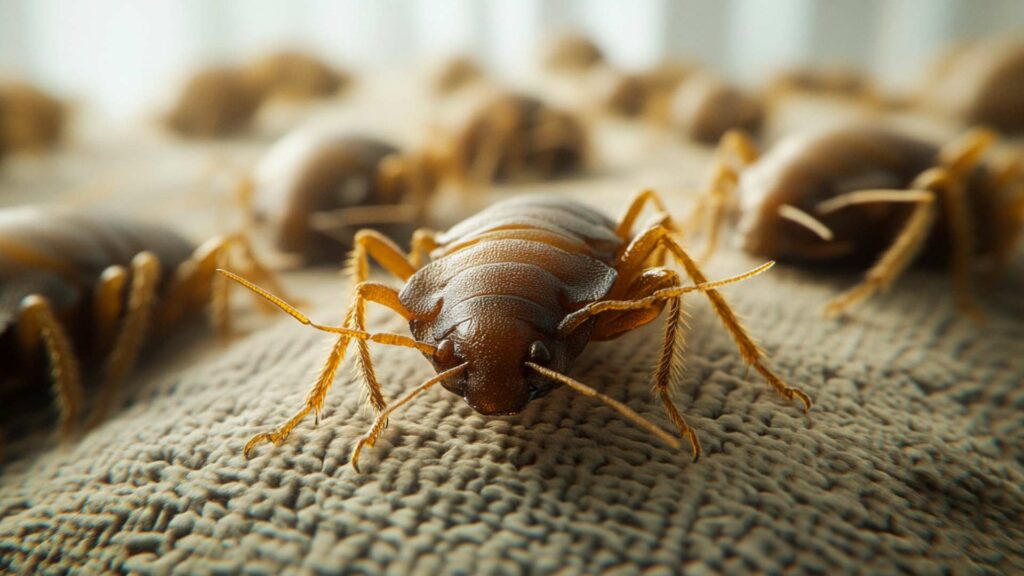
It’s important to note that while bed bugs do feed on human blood like mosquitoes or ticks do, they do not transmit diseases directly through their bites. While their bites may cause itching and discomfort for some individuals due to an allergic reaction or sensitivity, they pose no significant health risks. However, the psychological toll of a bed bug infestation can be immense, causing stress, anxiety, and sleep deprivation for those affected.
The Silent Night Invaders
One of the main reasons bed bugs flourish undetected is their ability to hide in inconspicuous places during daylight hours. Their flat bodies allow them to squeeze into tiny cracks and crevices, making them difficult to spot with the naked eye. Contrary to popular belief, bed bugs do not fly or jump but instead crawl quickly over surfaces.
Recognizing the signs of a bed bug infestation is crucial in preventing their spread and seeking prompt professional intervention. So, let us delve into some common myths and misconceptions surrounding these bloodsucking intruders and unravel the truth behind them.
Myth #1: Bed bugs only infest dirty homes
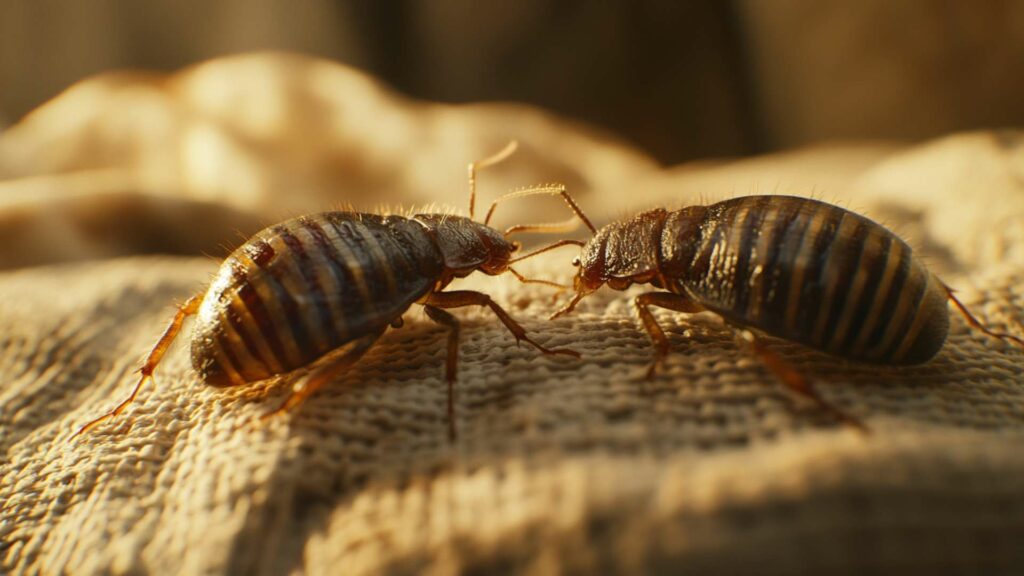
Attracted to Humans, Not Dirt or Filth
It is a common misconception that bed bugs are attracted to dirty homes, and infestations are solely found in unclean environments. However, the truth is quite different. Bed bugs are blood-sucking pests that feed on humans and other warm-blooded animals.
They are primarily drawn to carbon dioxide, body heat, and carbon dioxide, and certain chemicals present in our sweat. So, it’s not the state of cleanliness that bed bugs find appealing but the availability of potential hosts.
Bed bugs do not discriminate between clean or cluttered spaces; their main focus is finding a source of food (blood) for survival. These tiny bloodsuckers can thrive equally well in pristine hotel rooms as they can in messy bedrooms.
Research has shown that bed bug infestations have been discovered in some of the most high-end hotels and residences worldwide. It’s important to understand that bed bugs’ ability to survive in clean environments does not mean they prefer them.
Like any other pest, bed bugs seek out hiding places where they can easily access their victims at night while remaining undisturbed during the day. Cluttered spaces provide more room for hiding spots, making it harder to notice an infestation early on.
Furthermore, even spotlessly clean homes can inadvertently attract these resilient pests through contact with infested furniture or by unknowingly becoming new victims after visiting an infested location such as a movie theater or public transportation. Eliminating bed bugs requires addressing the root cause: their presence and access to humans.
While maintaining cleanliness is essential for overall hygiene and preventing other insect invasions, it alone cannot eliminate bed bug infestations. Effective treatment typically involves professional services like heat treatment or targeted pesticide application designed specifically for eradicating these nocturnal nuisances.
So remember, bed bugs are not picky about cleanliness; they are attracted to the warmth and carbon dioxide produced by humans. Taking prompt action and seeking professional help is imperative when dealing with a bed bug infestation, regardless of the level of tidiness in your home.
Myth #2: Bed Bugs: Visible but Often Misunderstood
The Size of Bed Bugs: Not as Tiny as You Might Think
When it comes to bed bugs, one of the most common misconceptions is that they are too minuscule to be seen with the naked eye. However, this notion about the size blood suckinblood-suckingg insects couldn’t be further from the truth. Adult bed bugs are approximately the size of an apple seed or about 5-7 millimeters in length.
These reddish-brown critters are not microscopic specks that require a magnifying glass to spot; rather, they can be easily seen by anyone with decent eyesight. Admittedly, nymphs—the younger bed bugs—are slightly smaller than their adult counterparts, but they are still visible without any assistance.
Nymphs measure around 1-4 millimeters and resemble miniature versions of adult bed bugs. Their diminutive size doesn’t make them invisible though; you just need a keen eye and proper lighting to identify these tiny pests.
The Importance of Spotting Bed Bugs Early
Understanding the size and visibility of bed bugs is essential for detecting an infestation promptly. By recognizing these pests before they have a chance to multiply and spread throughout your home, you can save yourself from future frustration and distress.
To effectively identify bed bugs, start by examining your sleeping area thoroughly. Inspect the seams and crevices of your mattress, box spring, and bedding for any signs of these unwelcome visitors.
Look for live bugs or their shed skins (exoskeletons), which they leave behind as they grow larger. It’s important not to overlook other furniture near your sleeping area since bed bugs can also hide in cracks on bedside tables or within upholstered chairs.
Common Mistakes in Identifying Bed Bugs
While it’s true that bed bugs can be spotted without additional aids, unfortunately, their identification is often mistaken. People sometimes mistake other pests or other insects, for bed bugs, leading to unnecessary worry and ineffective treatment. For example, carpet beetles or fleas can often be misidentified as bed bugs due to their similar size and occasional presence in homes.
Therefore, it’s crucial to differentiate between these pests by thoroughly examining their appearance and behavior. Consulting a professional pest control expert can provide you with accurate identification and help you address the situation appropriately.
Taking Action Against Bed Bugs
Once you’ve confirmed the presence of bed bugs in your home, taking swift action is imperative for effective control. Begin by washing infested bedding and clothing in hot water to kill any lingering bugs or eggs.
Additionally, vacuum your mattress, box spring, furniture seams, and cracks thoroughly to remove any visible bed bugs or eggs. While these steps can help minimize the infestation temporarily, it’s essential to understand that DIY methods alone may not completely rid your home of these resilient pests.
Bed bugs have developed resistance against many over-the-counter pesticides. Seeking professional assistance from a licensed pest control company experienced in bed bug eradication is often the most reliable solution for complete removal.
The Size Doesn’t Define Their Impact
Don’t underestimate the visibility of bed bugs due to misconceptions about their size. Adult bed bugs are indeed visible without magnification; they are about the same size as an apple seed.
By understanding this fact and promptly identifying an infestation through careful inspection of your sleeping area and nearby furniture cracks, you can take proactive measures against these bloodthirsty critters. Remember that early intervention is crucial for effective bed bug control before they multiply further and potentially cause significant distress in your life.
Myth #3: The Many Hiding Spots of Bed Bugs
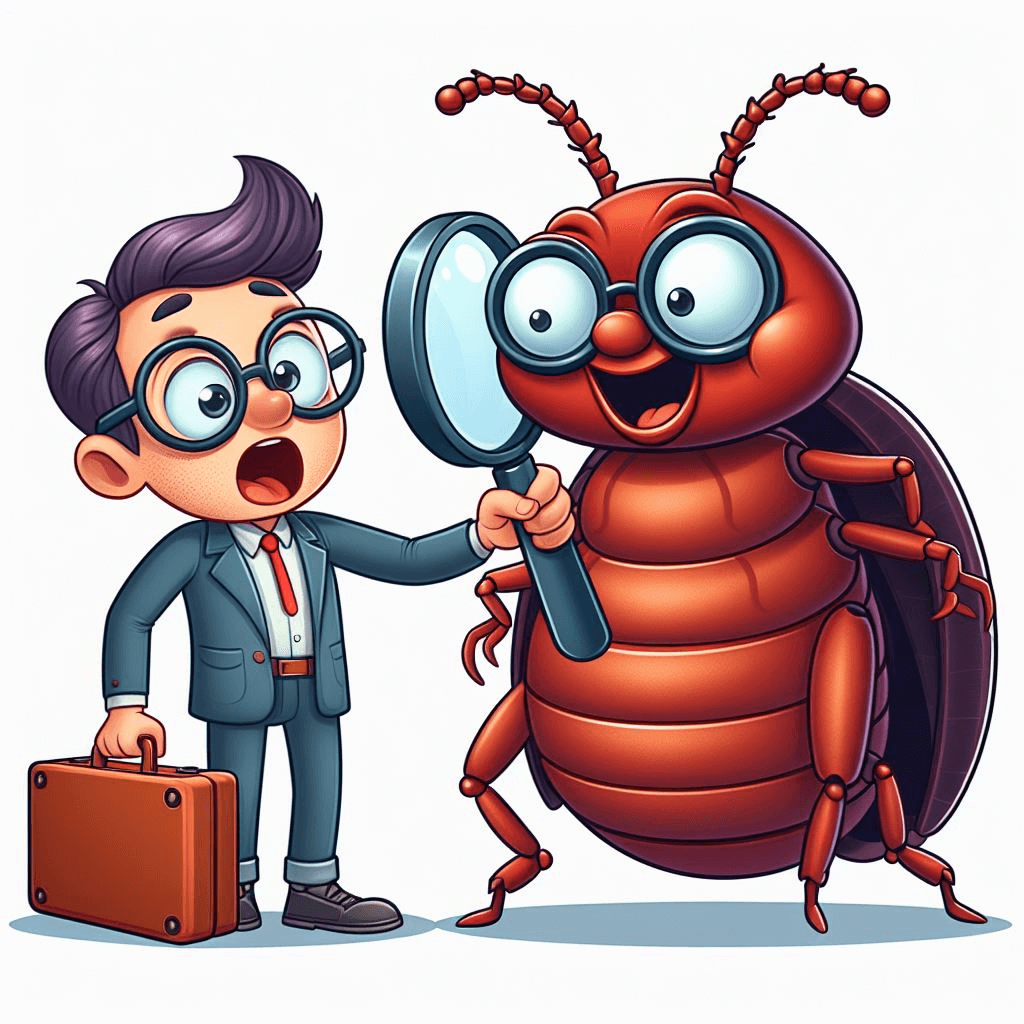
When it comes to bed bugs, the common misconception is that they only live in beds and mattresses. However, these sneaky pests are much more versatile when it comes to finding their preferred hiding spots.
They are not limited to just bedding and can infest various areas throughout your home. One of the prime locations for bed bugs to take up residence is in furniture.
They often find refuge in couches, chairs, or any upholstered pieces. The crevices and seams provide them with perfect hiding spots during the day while they patiently wait for their next feeding opportunity.
Another surprising place where bed bugs can set up camp is within cracks in walls. These tiny creatures can squeeze into even the tiniest crevice or gap, making it challenging to detect an infestation until it becomes severe.
Electrical outlets also offer cozy homes for these pests; they can crawl inside and establish a nest behind the cover plate, remaining undisturbed for long periods. Despite their name, bed bugs’ preference is not solely limited to beds themselves but rather being close to their human hosts.
Hence, you may find them hiding in areas adjacent to the bed such as nightstands or headboards. Their goal is easy access to feed on sleeping individuals during the next night shift without having to travel far.
Bed bugs are adaptable creatures that have evolved beyond merely residing exclusively in beds and mattresses. Furniture, cracks in walls, electrical outlets – all of these places provide ideal hiding spots for these pests as they seek proximity to their human hosts.
Myth #4: Bed bug bites are always itchy and easily identifiable
Reactions as Individual as Humans Themselves
When it comes to bed bug bites, several myths need debunking. One of the most common misconceptions is that bed bugs transmit disease because bug bites are always itchy and easily identifiable.
The truth is, reactions to these bites can vary significantly from person to person. While some individuals may experience intense itching and noticeable red welts, others may not have any noticeable reaction at all.
It’s important to understand that bed bugs feed on human blood, and their saliva contains anesthetic properties that help them go unnoticed while feeding on other victims. This means that some people may not feel the bite happening in real time or develop an immediate reaction afterwards.
So even if you wake up with unexplained bites, it doesn’t necessarily mean they were caused by bed bugs. Reactions to bed bug bites can differ due to various factors such as individual immune responses, sensitivity levels, and even previous exposure.
Just like with mosquito bites or any other insect bite, each person’s body reacts in its unique way. Itchiness is a common response for many people because of the body’s natural histamine release triggered by the bite, but not everyone experiences this sensation.
Furthermore, some individuals may confuse bed bug bites with other skin conditions or allergies. For instance, rashes caused by contact dermatitis or even allergic reactions to certain fabrics can mimic the appearance of bed bug bites.
It is crucial not to jump to conclusions solely based on the presence of skin marks without considering other possibilities. The unpredictability of reactions adds complexity when diagnosing a potential bed bug infestation based solely on visible signs on one’s skin.
That’s why it is advisable always to look for other telltale signs such as shed skins or blood stains on your sheets before concluding that you have a bed bug problem. Remember, it’s better to rely on thorough evidence rather than make assumptions solely based on the appearance of potential bites.
Bed bug bites are not always itchy and easily identifiable. Reactions vary from person to person, and some individuals may not even react visibly to bed bug bites at all.
Instead of relying solely on identifying bites, consider other signs of a bed bug infestation and seek professional help if necessary. Don’t let misconceptions about itchiness mislead you when it comes to dealing with these pesky pests.
The Nocturnal Bed Bugs: Debunking Myth #5
Adaptable Creatures of the Night
Among the many misconceptions surrounding bed bugs, one prevalent belief in bed bug myths is that they are exclusively nocturnal creatures, only active when darkness blankets our sleeping abodes. While it is true that bed bugs are primarily nocturnal beings, their adaptability allows them to adjust their feeding patterns if necessary. These resilient pests are driven by their insatiable need for a blood meal, which overrides any time constraints or sleep itself.
Around-the-Clock Feast
Heavy infestations can lead bed bug populations to venture out in broad daylight to satisfy their cravings. When hiding spots become overcrowded due to high numbers, bed bugs may wander during daytime hours in search of an available host.
As unsettling as it may sound, these bloodthirsty critters can be just as active during the day as they are at night when conditions necessitate it. So don’t let your guard down just because the sun is shining!
Multiple Factors at Play
Several factors contribute to bed bugs modifying their activity patterns. One significant factor is human behavior and routine disruptions within an infested environment.
For instance, if a person works night shifts and sleeps during the day, bed bugs will adjust their feeding schedules accordingly to take advantage of those opportune moments when humans are most vulnerable. Additionally, bed bugs live and bug populations that have been subjected to frequent disturbances or attempts at eradication may become unsettled and more inclined to venture out during daytime hours in search of new hiding spots and fresh sources of sustenance.
Unmasking Their Presence
To help determine whether you have a potential bed bug problem beyond what meets the naked eye — or rather, what your subconscious scratching hints — consider setting up strategically placed monitoring devices such as sticky traps near your sleeping quarters. These traps can capture any wandering bed bugs, providing a clear indication of their activity and feeding patterns.
Managing Their Movement
Understanding that bed bugs can adapt their behavior and activity patterns is crucial in taking the appropriate measures for control and eradication. Professional pest control services, armed with comprehensive knowledge and effective techniques, can assess the infestation severity and implement strategies such as targeted pesticide application or even professional heat treatment to eliminate bed bugs effectively.
While bed bugs are predominantly nocturnal creatures, they possess the ability to adjust their feeding habits when necessary. Heavy infestations may prompt them to venture out during daylight hours in search of both sustenance and new places to hide.
Understanding their versatility allows us to better combat these wily pests using effective methods tailored to their adaptable nature. So don’t let your guard down during the day; be vigilant in your pursuit to rid yourself of these persistent night crawlers!
The Myth #6: DIY Methods: The Battle Against Resilient Bed Bugs
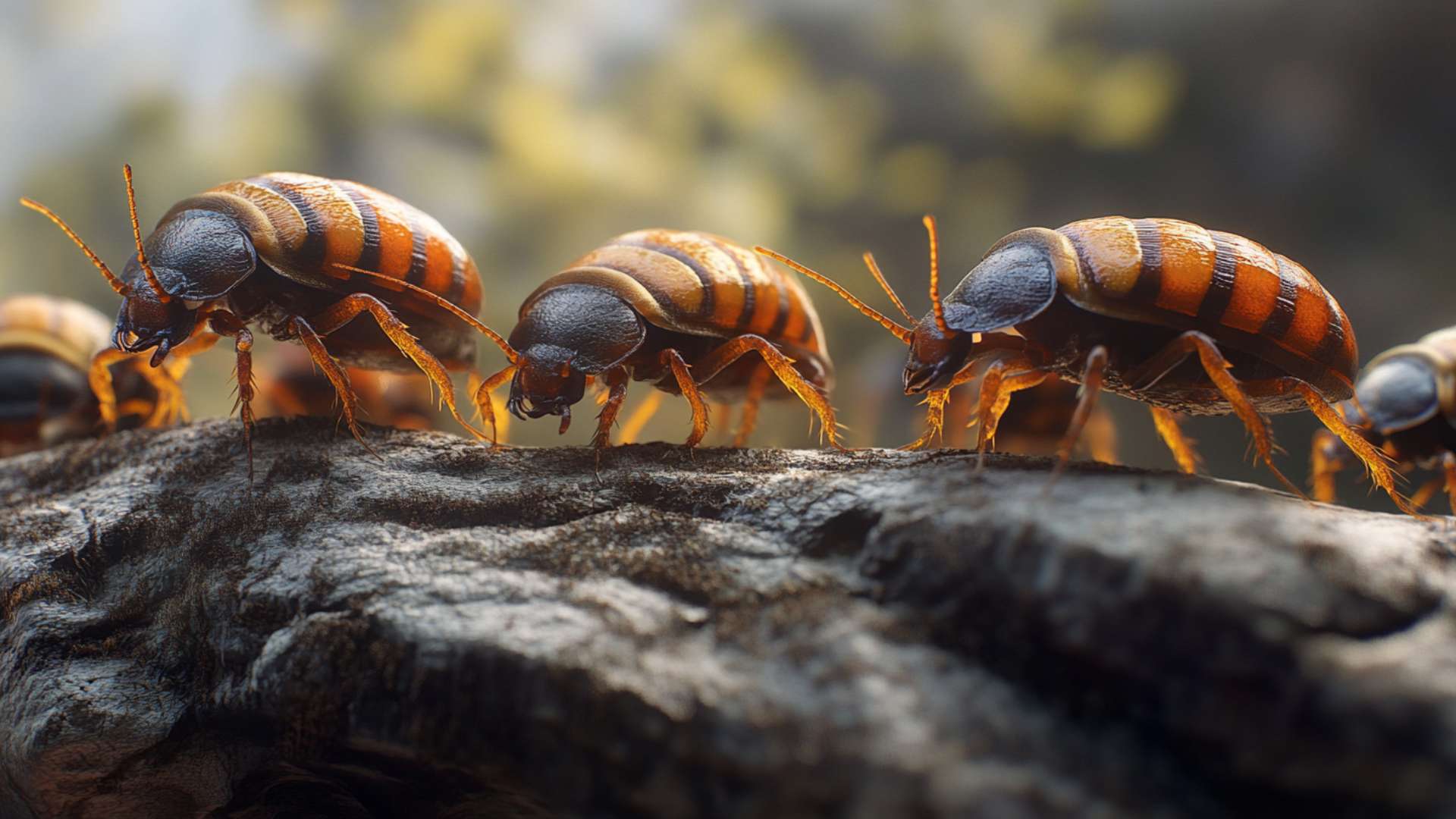
Explaining the Failure of DIY Methods
When faced with a bed bug infestation, many people turn to do-it-yourself (DIY) methods in an attempt to eliminate these pesky insects. However, it is important to understand that bed bugs are incredibly resilient and adaptable creatures. DIY methods often fail in getting rid of them completely.
Bed bugs have developed resistance to many over-the-counter insecticides, making them ineffective against these pests. Furthermore, their ability to hide in tiny cracks and crevices makes it difficult for non-professionals to locate and eliminate every last bug.
The Importance of Professional Pest Control
To achieve complete eradication of a bed bug infestation, it is crucial to seek professional pest control services. Pest control professionals are equipped with the knowledge, experience, and tools necessary to effectively combat these persistent insects. They understand the behavior and biology of the bed bug myths other bugs, allowing them to implement targeted treatments that yield better results than DIY approaches.
Thorough Inspection and Treatment
Professional pest control experts employ a comprehensive approach when dealing with bed bugs. They conduct thorough inspections to identify all hiding spots where bed bugs may be lurking—whether it’s within mattresses, furniture, or even behind electrical outlets. Additionally, they use specialized equipment such as steamers or vacuuming devices designed specifically for eliminating bed bugs at all stages of their life cycle.
The Power of Heat Treatment
One highly effective method employed by professionals is heat treatment. Bed bugs cannot withstand extreme temperatures, so heating the infested areas can be an incredibly efficient way to eradicate them. Professionals use special heating equipment that raises the temperature in rooms or enclosed spaces beyond what is tolerable for the insects—ensuring no survivors remain.
Long-Term Prevention and Education
Professional pest control services not only focus on eliminating existing bed bug infestations but also emphasize long-term prevention. Experts provide valuable insights into how to prevent future infestations, such as regularly inspecting bedding and furniture, using protective encasements, and maintaining cleanliness in living spaces. By educating homeowners about these preventive measures, professionals empower individuals to take proactive steps in safeguarding their homes against these resilient pests.
While the allure of DIY methods may seem tempting, they often fall short when it comes to effectively eliminating bed bug infestations. Due to the resilience and adaptability of these pests, professional pest control is essential for complete eradication.
Seeking the expertise of trained professionals ensures a more successful outcome and provides valuable education on prevention strategies. Remember, when it comes to battling bed bugs, relying on professionals is the most reliable approach for achieving a bed bug-free environment.
Myth#7: Bedbugs transmit diseases.
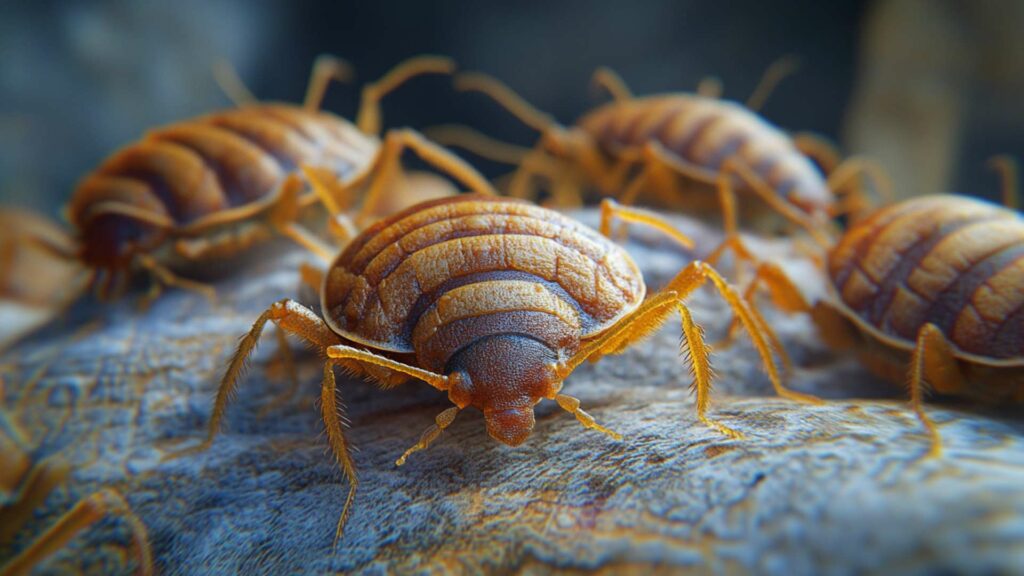
Exploring the Truth Behind Bed Bug-Related Health Concerns: Debunking the Fear of Illness Transference
The fear of bed bugs transmitting diseases is a prevalent concern among many people. It’s understandable to worry about the size of these tiny pests potentially spreading illnesses, given their association with unsanitary conditions and feeding on human blood. However, it is important to separate fact from fiction to alleviate unnecessary anxiety and promote accurate knowledge.
The truth is that bed bugs have not been proven to transmit diseases to humans. Unlike certain disease-carrying pests like ticks and mosquitoes, bed bugs do not participate in pathogen transmission. Extensive research conducted by entomologists indicates that while bed bugs fly and bug bites can cause discomfort and irritation, they do not pose a significant health risk.
To eradicate the common myths and misconceptions about bed bugs, it’s crucial to recognize the distinction between annoying bites and actual disease transmission. While mosquitoes can carry pathogens like the malaria parasite or dengue fever, and ticks are infamous for spreading Lyme disease, bed bugs are not vectors for infectious diseases.
The Secret Behind Their Innocence: Understanding Bed Bugs as Blood-Feeding Pests
We must explore their feeding ha. These pesky insects solely rely on human blood as their food source. When they fit to find bed bugs and further comprehend why bed bugs don’t transmit diseases, they pierce the skin with their tiny mouthparts and inject an anticoagulant substance into their host’s bloodstream to facilitate feeding.
This adaptation, while causing itchy welts for some individuals, does not involve the injection of pathogens that could lead to diseases. Bed bugs lack the potential to carry or harbor viruses, bacteria, or parasites that might pose a threat to human health.
Ensuring Peace of Mind: Trusting in a Lack of Disease Transmission
Bed bugs do not transmit diseases. Their bite reactions are generally limited to mild skin irritations. While an infestation can be distressing and require professional intervention for eradication, it is essential not to unnecessarily panic about contracting illnesses spread diseases from bed bugs.
By dispelling this misconception and understanding the limitations of these tiny insects’ capabilities, we can alleviate anxiety surrounding bed bug bites and focus on effective ways to get rid of them. Remember, maintaining good hygiene practices and promptly seeking professional assistance are key factors in combating bed bug infestations.
Conclusion
Many common myths and misconceptions exist around bed bugs. We explored various aspects such as their attraction towards unsanitary conditions (or lack thereof), visibility with the naked eye, preferred hiding spots beyond beds and mattresses, variability in bite reactions among individuals, activity patterns throughout the day and night, limitations of DIY methods for elimination purposes, as well as their inability to transmit diseases.
Understanding these truths allows us to approach bed bugs and travel to other bug infestations with knowledge rather than fear. By debunking these common myths and misconceptions about bed bugs and promoting accurate information about these pests’ behavior and characteristics, we empower ourselves to address any issues related to them proactively.
Remember that while dealing with an infestation may be challenging at times due to their resilience, professional pest control services can provide effective solutions for complete eradication. By prioritizing cleanliness, regular inspections, and immediate action in case of suspicion, we can minimize the impact of bed bug populations.
So let’s remain vigilant, well-informed, and ready to tackle not only bed bugs but also any other pests that may cross our paths. By staying educated about these matters and sharing knowledge with others, we contribute to a healthier and more comfortable living environment for everyone.
Experience the ultimate solution to bed bugs with D-Termination: The premier pest control service in Las Vegas!

Are you currently struggling with a bed bug infestation in Las Vegas? Fret not, as D-Termination is here to provide assistance. Our team of expert professionals specializes in effectively eliminating bed bug infestations and restoring comfort to your living space. Bid farewell to bed bugs and make the choice to select D-Termination for highly effective pest control today!
To book your bed bug control service and reclaim your space from these persistent pests, don’t hesitate to contact us at 702-919-6310 or visit dtermination.com.
Frequently Asked Questions:
Bed bugs are often confused with other pests such as carpet beetles or fleas.
There is no need to feel embarrassed about having bed bugs, as infestations can happen to anyone and are not related to personal hygiene or cleanliness.
Some facts about bed bugs include their ability to survive without feeding for several months, their preference for hiding in cracks and crevices near their hosts, and their tendency to be active at night.
Keeping lights on in a room does not repel or prevent bed bugs. They are primarily attracted to the carbon dioxide and warmth emitted by their human hosts.
If you found this article enjoyable, you might also find the following related content of interest:
The Seasonal Symphony of Bed Bugs: Unveiling the Enigmatic Patterns of Their Activity








